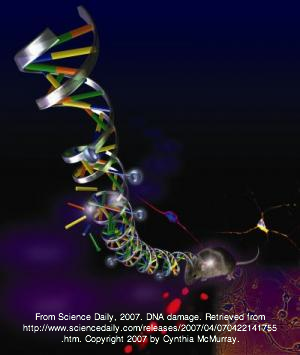Conclusions

I began my project by looking at sequence similarities between the human BRCA1 gene and protein with homologs. Through protein sequence alignments, I found that the protein is highly conserved in mammals and avians, but less conserved in the worm. This is not to say that the worm protein does not function similarly, but as a model organism, I would trust the more conserved proteins to give more similar results and phenotypes. Most of the phylogenetic trees constructed from sequence alignments yielded relatively predictable results: primates clustered together, rodents clustered together, and mammals clustered together with avians and worms as outgroups. Proteins that interact with BRCA1 show similar levels of homology through evolution, indicating the co-evolution of the pathway.
Gene ontology then gave me an introduction to the sorts of details I should focus on by providing a framework for the protein. The number of entries found in BRCA1 gene ontology databases was very high, so I will not relist them here, but the common themes between the entries were DNA damage/repair/replication, protein ubiquitination, translation regulation, cell proliferation, and apoptosis. These themes all indicate that it functions as a tumor suppressor, which is well established.
Phenotypes described for C. elegans can be explained by BRCA1's role in DNA damage repair and protein ubiquitination functions, but obviously C. elegans does not develop breast cancer like humans do. There are mouse and rat models for BRCA1 mutations that do develop mammary tumors, and are a more useful model organism based on the homology of BRCA1 pathways with humans and relative ease of use as a model organism.
Looking into the gene itself, I could not use many analyses available due to the enormous length of the gene. For most analyses, I used the mRNA sequence for isoform 1. MOTIF results returned a few sequences to note: CEBP enhancer binding protein region, Cap transcription initiation region, and an AP-1 binding site. I am somewhat skeptical as to what these results actually mean, as the function of transcription binding domains within the coding region of a gene would not be expected to contribute to its own transcription. I do want to note that I will discuss the CEBP enhancer binding protein region and Cap transcription initiation region in further directions.
BRCA1 expression can vary in different cancers. In terms of breast cancer, it is well established that hereditary mutations produce non-functional proteins that are often degraded or completely absent. Sporatic cases of breast cancer are often associated with a decrease in BRCA1 expression independent of mutations in the coding region of the gene. Still, in some sporadic cases of breast cancer and in other forms of cancer, BRCA1 expression increases. This can be explained, however, as BRCA1 functions in DNA repair pathways, and thus would be expected to increase in cancers, where chromosomal aberrations are frequent. These situations can be seen in the microarray data I presented. These opposite situations reflect the redundancy in protein pathways that repair DNA, which is a very important process in the cell.
BRCA1 protein structure is divided mainly into two functional parts of the protein. The RING finger domain at the N-terminus is mainly responsible for BRCA1's role in ubiquitination through interaction with BARD1. BRCA1's role in DNA damage repair is through the BRCT domains found at the C-terminal, which allow interaction with a number of other proteins implicated in DNA damage repair. BRCA1 is known to be phosphorylated at many sites, most notably through its interaction with ATM, an important protein in DNA damage repair. These protein modifications are better characterized than modifications such as ubiquitination of BRCA1, but it is still unclear the specific roles phosphorylation has at specific sites in the protein. Sequence predictions localize BRCA1 to the nucleus, where it would both be expected to localize based on its function, as well as where it has previously been shown to localize. This localization is conserved through all species in which BRCA1 seems to be a major protein in cellular function. Mutations can cause mislocalization of BRCA1 to the cytoplasm, possibly due to truncations that exclude the nuclear localization signal from the protein.
Hundreds of protein interactions with BRCA1 have been described, most of which come from strong experimental evidence. Therefore it would be expected that disruption of BRCA1 through mutation or lack of expression could greatly affect the function of a number of pathways and other proteins' functions. Some of the most important and frequent proteins with which BRCA1 interacts are BARD1 (which contributes to BRCA1's role in ubiquitination), and RAD51, RAD50, and ATM (which all contribute to BRCA1's role in DNA damage repair).
The main conclusions that can be drawn from this project is that BRCA1's role in breast cancer is through loss of its function in DNA damage repair, as well as a loss of protein ubiquitination. These themes came up in nearly every aspect of this project and made this point very clear. Thus BRCA1 is yet another model for how tumor suppressors function in normal cells, and how when lost, cancer results.
Site created by Jessica D. Kueck
Genetics 677 Assignment, Spring 2009
University of Wisconsin-Madison
